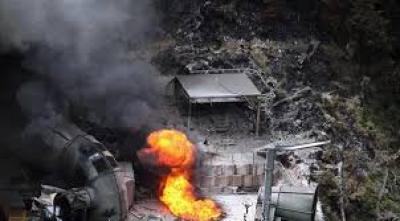Flagship Pike River Re-Entry Policy Threatened by Undetectable Gas
Methane gas has become so politicised that officials are terrified to talk about outside a rigid and approved context and frame of reference.
Nothing underlined the perils attendant on the Labour coalition government’s Pike River mine re-entry fiasco in that a cause of its being aborted was that a “wee” creature had chewed the lead of a gas sensor.
Nothing emphasised the presence and name of this gas as the determination by everyone concerned to avoid mentioning it.
The gas was and is methane gas and it was the culprit in the Pike River mine disaster.
Methane hovers. It is lighter than air.
In its ghostly fashion it cannot be detected by human senses.
Officially we were told that readings on “oxygen” led to the abandonment of the re-entry.
We were told that the “atmosphere” imperilled the re-entry.
The word methane has become so politically-charged that in a contrary way in the Pike River disaster and its aftermath it became conspicuous by its absence.
The re-entry scheme and the reasons for it being aborted encapsulated the basic-science comprehension problem of New Zealand governments since the advent of the professional politician i.e. those who have no background in anything productive beyond word-creation, and posturing.
The notion of the mine being “sealed” was chief among these.
Other than the elaborate and mediagenic barrier at the entrance no other part of the mine is sealed it all.
The mine has been soaking up methane ever since the last explosion there.
Methane gas has been filtering through into the mine from the surrounding geology ever since.
This aggregation will have been accelerated since the official and token sealing of the mine entrance by internal collapses which in turn will have been aggravated by things such as seismic activity, and also by water.
A disused mine is much more dangerous than a working one.
Another threat barely mentioned in the re-entry turn back reasons was the presence of coal dust.
This volatile substance, as with methane, will have collected in the mine over the intervening years.
In this re-entry scheme there would have been no electrics in the mine of the type that powered the ventilation equipment which as the Royal Commission so studiously observed was positioned inside the mine, rather than outside it, the practice everywhere else.
Nobody doubts that methane gas caused the mine to explode.
But the cause of the ignition of the mine methane remains undetermined.
The Pike River mine re-entry has about it the aura of political showboating allied to a victim-culture determination to identify individuals or groups of them responsible for the explosions.
The hunt for SCADA type monitoring recordings centred on the initial explosion and which might prove who exactly did what and when in the lead up to the disaster is only one indicator of this.
Promises to the effect that the re-entry will face a cut-off of one kind or another “by Christmas” only serves to underline the gulf between the productive economy, with all its physical threats as opposed to the politico-bureaucratic one in which threats are reputational.
On one side of this divide is a now long abandoned mine with its deteriorating structure and its accumulated methane.
On the other side, the political ambition to showcase not only a mineral villain, but ideally one or two human ones as well.

